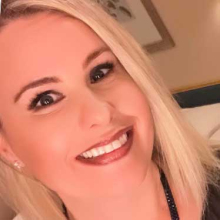by Faith Schwartz, Manager of Communications, University of Arizona Cooperative Extension

As the manager of communications for University of Arizona Cooperative Extension, I have a keen interest in promoting effective communication. With changes in communication media and public expectations, I see practices changing. The WRRC’s quarterly newsletter will be discontinued, but the Weekly Wave will continue – a strategic effort the WRRC communications staff is committed to sustaining.
In her featured column, WRRC Director Sharon Megdal explains that resource constraints and new priorities prompted the change. Instead of a curated collection of articles that appear quarterly, the WRRC will put efforts toward the Weekly Wave where WRRC staff members are able to put out timely content – like updates and events – that is important to readers.
Experts in newsletter communications agree that concentrating efforts on only the most significant content is an effective strategy when resources are limited.
“Content is what makes a newsletter effective. It’s great to have lots of color and beautiful images. But if the content is of marginal interest to a reader, those elements won’t be enough to make the newsletter valuable to them,” says Pila Martinez, senior director of strategic communications at the University of Arizona.
Martinez worked as a journalist for several years before joining the UA, where she has overseen the publication of high-level communications, including Lo Que Pasa, the UA’s weekly e-newsletter for employees.
“A common mistake is compiling newsletter content around the question ‘What do we want to tell our readers about us?’ If you want readers to engage with your content, the question to ask is ‘What would our readers find interesting?’” Martinez said. “If you can provide useful and relevant information to readers on a regular basis, you are much more likely to make a connection and a positive impression.”
Susanna Eden, who has edited the WRRC’s quarterly newsletter since 2009, agrees that the change is needed. “We think the Weekly Wave gives us a very valuable vehicle for keeping people informed about what’s going on in water at the WRRC, the university, and the wider community without overloading their inboxes with announcements.”
Martinez stresses the importance of considering readers when evaluating format and frequency of communication. “There’s a balance to be struck between communicating regularly enough to stay in the minds of your audiences and communicating so much that they tune you out or choose to disconnect entirely,” Martinez said.
“It’s also important to focus on the goal and not confuse mailing list size with reach. You can send an email communication to 25,000 people. But if only 1 percent of them read it, and then delete it, then nothing has been accomplished. It is more worthwhile to make sure communications are reaching the right audience – even if it’s relatively small – and that the content is relevant to that audience,” Martinez said.
The advent of social media has brought challenges to communicating in traditional ways. That being said, one of the best parts about social media is that it’s instant. But that’s also its drawback. While instant, it’s also fleeting. As I have learned, you may “post” something only to have it “disappear” in an onslaught of dozens of other posts.
While communication methods continue to evolve, with new platforms emerging as others fade away, the need to communicate will never go away. Even though we post to Facebook, or Twitter, or Instagram, those channels only supplement “old-fashioned” communications. Face-to-face interaction and even telephone conversations can never be replaced.
A major issue we face, in both the business and academic worlds, is deciding on which resources to direct where. With greater numbers of people to serve and limited resources, we have to direct time and effort to get the biggest impact, or “bang for the buck.” Right now, e-newsletters continue to be easy, organized packages that retain their value amid all of the options.
I look forward to continuing to receive the Weekly Wave, and applaud the WRRC’s efforts to focus its efforts on making it helpful and relevant to its supporters.

